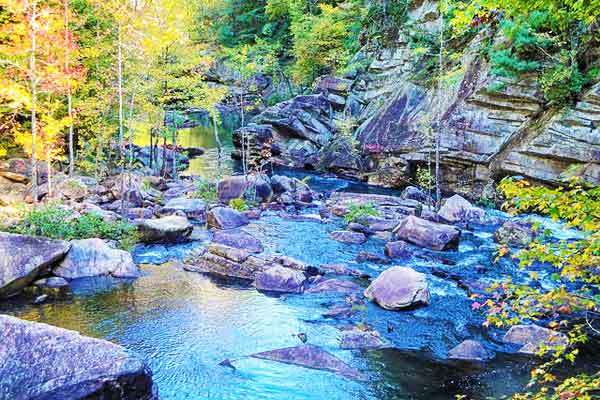The Appalachian Trail is perhaps the most well known of all of the National Scenic Trails in the United States. The trail stretches for 2,190 miles through 14 states and takes approximately 5 to 7 months to hike in its entirety.
Here you will find all of the information you need to plan for a hike on the Appalachian Trail, whether you’re going for a weekend or hiking the entire trail.
The Appalachian Trail offers a variety of scenery, is well maintained by volunteers, has established campsites for hikers, and is centered around a hiking community that’s like no other in the world.
Appalachian Trail Overview
Millions of people set foot on the Appalachian Trail every year. Some do a quick day hike, some hike for several days, and some set out to walk the entire trail.
According to the Appalachian Trail Conservancy, over 800 hikers walked the entire trail in 2018. Walking the entire trail in one year is referred to as a thru-hike. Only about 20% of those who set out to do a thru-hike will finish.
Located in the Eastern United States, the Appalachian Mountains are the oldest mountain range in North America. The trail goes through two national parks, Great Smoky Mountain and Shenandoah, and eight national forests.
The trail is maintained by a community of volunteers. There are trail shelters (also known as lean-tos) at most of the campsites along the trail. A shelter is typically a wooden platform with a roof and three walls.
There is usually an outhouse (or privy, as hikers call them), a place to store food bags at night, a fire ring, and a water source. Hikers could easily walk the trail and spend almost every night at a shelter.
One of the most notable aspects of hiking the Appalachian Trail is the community. Most thru-hikers begin within the same month of the year.
This creates a sort of walking community, where hikers run into the same people over and over again or hear about other hikers who have passed by. Those who are walking sections of the trail are welcomed by a friendly, like-minded community.
Appalachian Trail Quick Facts
- Distance: 2,190 miles / 3,525km: The milage changes slightly year to year, as maintenance is done and re-routes are created
- 14 States: Georgia, North Carolina, Tennessee, Virginia, West Virginia, Maryland, Pennsylvania, New Jersey, New York, Connecticut, Massachusetts, Vermont, New Hampshire, and Maine
- Length of Time: it takes 5-7 months to hike the trail in it’s entirety
- Accommodation: Campsites and shelters exist along the trail; in towns hikers can opt to stay at motels and hostels
- Cost: Expect to spend anywhere from $3,000-5,000 to hike the entire trail, plus gear costs and transportation to the trail
- Highest Point: Clingman’s Dome, NC; 6,643ft / 2,025m
- Lowest Point: Bear Mountain State Park, NY; 124ft / 38m
The Best Time To Hike & How To Choose Your Direction

Thru-hikers will either walk north-bound or south-bound. Trail slang for this is NoBo and SoBo. Most people choose to walk north and begin their hikes in March or April. If walking south, most hikers begin in June or July. There are benefits to both options.
For hikers who are very social and like to meet lots of other people, hiking north is the best option. Many of the campsites on the Georgian section of the Appalacian trail are even crowded at the beginning.
North-Bound Hike
NoBo hikers will be walking during peak season, thus never have to worry about any shops or hostels being closed when passing through towns. Because of the earlier start date, hikers headed north will be gaining daylight as time goes on.
Arguably, the most difficult and beautiful parts of the Appalachian Trail are along the New Hampshire and Maine trails. North-bound hikers often feel that it’s a nice way to end their hike, and they are in the best shape for the difficult sections having walked from tough Georgia to get there.
South-Bound Hike
Many hikers choose the south-bound option because of time constraints. SoBo is a popular option for those who have just graduated high school or college and can’t begin until summer.
Others simply want to avoid the large bubble of hikers headed north. It’s also beneficial for those who don’t want to hike in the heat of summer. The mountainous regions of the northeast don’t get too hot in the summer months, hence SoBo hikers can enjoy cooler weather the entire time.
Another advantage of hiking south is that the hardest part of the trail is over at the beginning. After making it through the big mountains of the northeast, SoBo hikers can really begin hiking big mile days.
Weather On The Appalachian Trail
Expect every weather condition you can imagine. The spring and fall may very well bring snow, hail, and freezing temperatures. Have a cold-weather sleeping bag, plenty of layers of clothes, and a hat and gloves.
Be aware of the signs of hypothermia, how to treat it, and how to prevent it. Be sure that you always have a dry set of clothes to put on in the evenings and prioritize drying out your sleeping bag if it gets wet.
Rain will almost certainly occur during your hike. Have a rain jacket and backpack cover. You can even put a trash compactor bag inside of your backpack and pack all of your gear into it.
This way your backpack is extra waterproof. If it’s cold and rainy, this is another time to be aware of the signs of hypothermia. Warm and rainy weather isn’t as much of a safety concern.
Heat and humidity is common in the summer. Mosquitos and gnats usually come out in this type of weather as well. A hot summer with a lack of rain can quite possibly dry up some of the water sources, so have a good water filter with you to deal with dirtier water fountains.
Pro Tip
Carry an extra water bottle during the heat of the summer and always carry more than what you think you’ll drink. Find a natural bug spray to use, and regularly check yourself for ticks, as Lyme Disease is a very real risk on the Appalachian Trail.
How Difficult Is The Trail
The Appalachian Trail is very difficult. Typically, there is a lot of elevation change along the way, so you will constantly be hiking steep uphills and downhills. The distance of the trail is vast, and injuries from over-exertion are common.
There is also the mental challenge of continuing to hike for weeks or even months at a time, over difficult terrain, and through drastic weather changes.
The vast majority of those who set out on a thru-hike of the Appalachian Trail do not succeed. There is a success rate of about 20% of thru-hikers who complete the entire trail.
One thing that makes the trail somewhat easier is that it is well marked and very safe. White-blazes mark the trail every few hundred feet, so you will always know whether you’re on the correct path. There are signs that point to shelter areas and campsites. The guidebooks are extremely detailed and accurate.
If an emergency does arise, there are usually other hikers around who will be able to help you out and get you to safety. Additionally, Verizon has good cell phone coverage on the trail.
In an emergency situation, there’s a good chance you’ll either have cell phone service or be a few miles from cell phone service.
How To Prepare For The Hike
Mental Preparation
It’s important to both physically and mentally prepare yourself for hiking the Appalachian Trail.
As far as mental preparation goes, read as many books and blogs as possible by past thru-hikers. Doing a thru-hike is hard, and it’s important to know what you’re getting into ahead of time.
There are plenty of wonderful reasons to set out on a thru-hike, but there will also be lots of difficulties and bad days. Be ready for some things to go wrong.
Tell the most important people in your life about your intentions. They will likely think you are crazy and try to discourage you. Get those conversations out of the way early, so you aren’t hit with last minute doubts right before your hike is supposed to begin.
Or maybe you’ll get lucky and the people in your life will be happy for you and supportive. In this case, you'll have people who can hold you accountable to your goals and cheer you on.
Physical Preparation
For physical preparation, the best way to get ready is to go on strenuous day hikes frequently. Find some local trails near you, and walk them as often as possible. As your start date approaches, start doing day hikes with your fully loaded backpack. This way you can both, train yourself and have plenty of time to consider whether or not you really need everything in your backpack.
Some hikers don’t train at all before setting out. The philosophy here is that they will get in shape while on the trail. This is certainly an option if you’re feeling lazy or don’t have much free time before beginning your hike.
However, your first few weeks on the Appalachian Trail will be significantly easier if you do some training ahead of time.
If you’ve never been backpacking before, we recommend trying it out for a week or so before committing to a thru-hike. Yes, there are thru-hikers out there who had never camped a day in their life before starting their hike.
It’s certainly possible, but it’s not ideal. A thru-hike is a huge investment of time and money, and it requires you to put your entire life on hold in order to do it. It would be wise to try out a short hike first and see if long-distance hiking is truly what you want to do.
Diet & Supplements for the Appalachian Trail
It’s essential to plan proper nutrition when undertaking a long trek like the Appalachian Trail. Consuming healthy and balanced meals rich in nutrients will enhance your endurance and overall well-being. Incorporating quality protein, carbohydrates, fruits, and vegetables supports physical exertion and recovery.
Additionally, supplements can prove invaluable in ensuring you receive all necessary nutrients during your hike. Consider using specialized supplements tailored for intense physical activity to maintain energy levels—such as those found on meonutrition.com - which focus on boosting stamina and facilitating muscle recovery.
Food & Resupplies On The Appalachian Trail

The trail typically passes by two or three towns a week. The road crossings to the towns will be marked in your guidebook. Sometimes the trail passes right through town and sometimes it’s several miles away.
Hitchhiking
If town is several miles away, it’s normal for hikers to hitch-hike into town. If you’re nervous about hitch-hiking alone, you can ask another hiker to go with you. You can also take a few safety precautions, such as keeping your phone, wallet, and pepper spray accessible. For the most part, locals are aware that hikers need to come to town for supplies and will be happy to give you a ride.
Groceries And Food Drops
There are plenty of grocery stores and shops along the trail. It’s not really necessary to mail food to yourself unless you really want to or have dietary restrictions.
For example, some of the resupply points are small shops with limited food. If you need gluten-free, vegan food, or have significant allergies, you may want to look through the guidebook ahead of time and plan a few food drops.
To organize a food drop, you need a reliable person at home, who’s willing to mail things to you. We recommend buying non-perishable food ahead of time and packaging it up. Then your food drop person only has to get it to the post office. Look in the guidebook to determine which outfitters or hostels are willing to hold packages for hikers.
You can also mail things to the local post offices, but they do have limited hours. You may be out of luck if you arrive in town on a Saturday afternoon.
The Importance Of Planning Ahead
Resupplying at grocery stores takes some degree of planning. Figure out how many days you are from your next town. Then you can determine how many breakfasts, dinners, and snacks you need to make it there. Perhaps buy an additional meal or two just in case something goes wrong and you don’t make it as quickly as planned.
There will also be times when you need to replace gear. Camp stove fuel can be found in most towns along the way. There are outfitters in some towns who can get you set up with new gear if something has broken. You can also order gear online and have it shipped to a post office or another establishment in your next town.
Practicing 'Leave No Trace'
It’s very important to leave things as you found them. This means respect the campsites and shelter areas and pack out all of your trash with you.
Do Not Leave Unwanted Food On The Trail
New hikers will often bring way too much food or gear and be tempted to abandon things at shelters. This is not OK. If you brought too many things, you can ask other hikers if they need any extra snacks or whatever it is you have.
Most people won’t turn down free food. However, if you don’t have any takers you do need to carry your things to the next town. There are often hiker boxes at hostels where extra gear or food can be left for others to take. Or you can mail your extra things home.
At shelter areas, be sure to use the bear boxes or bear bag pulleys that are provided. There are black bears along the trail, and they do know where to go to get food from hikers. Furthermore, mice and squirrels frequent the shelters and will also try to get to your food.
Use The Provided Bear Boxes
Most shelters and campsites have a privy. Some of the privies are mouldering and some are composting. Read the signs that are posted in the privies for instructions. In some of them you will need to throw a handful of duff in when you’re done to help the composting process.
Bathrooms On The Appalachian Trail
Some types of privies are OK to pee in and some are not. It’s fine to throw toilet paper in the privy, but don’t throw tampons or pads in because they won’t compost fast enough.
If you need to use the bathroom and you are not near a privy, be sure to go away from the trail and away from any water sources. Dig a hole 6-inches (15cm) deep. And pack out your toilet paper; don’t bury it. You'll need resealable bags for that.
For women, all tampons and pads must be packed out as well and not buried. A good alternative is to use a reusable menstrual cup in order to reduce the trash you have to carry.
Appalachian Trail Costs & Permits
Hiking the Appalachian Trail will cost anywhere from $3,000 to $5,000, not including gear or transportation to and from the trail.
If you are budget-conscious, always share motel rooms or stay in hostels, and don’t overindulge on food and drinks in town, you can expect your costs to be closer to $3,000. If you like to treat yourself often, stay in town a couple times a week, and buy expensive food at grocery stores and restaurants, expect to spend closer to $5,000.
There will also be occasions where unexpected costs arise, such as if a piece of your gear breaks. We recommend buying gear from companies that give a quality guarantee and will replace faulty items.
Budget about $1,000 for gear if you’re starting from scratch. This will be a reasonable amount to spend if you shop for deals, don’t need the newest and most high-tech gear, and aren’t too attached to getting any particular brand. However, the price of gear can easily increase to $2,000 or more if you want the newest, most ultra-light stuff available. See our packing list to get the stuff that should last.
There is no permit needed to hike the Appalachian Trail. You will need a backcountry permit for the sections of trail through Great Smoky Mountains National Park and Shenandoah National Park.
There is a thru-hiker permit for Great Smoky Mountains NP that can be obtained online for a cost of $20. Shenandoah National Park permits can be obtained for free at the park entrances.
Wildlife On The Appalachian Trail
There is everything from bears, snakes, coyotes, deer, mice, squirrels, birds, and more along the Appalachian Trail.
The best thing you can do as a hiker is to leave the wildlife alone. They are usually frightened of people, so if you see an animal just observe it from a distance and don’t try to get close to it.
- IMPORTANT: Do not feed the animals or drop any crumbs on the ground. They will become reliant on humans if they get fed and this will reduce their chance of surviving in the wild.
If you spot a black bear, it’s important not to run. Oftentimes, the bear will run from you once it sees you. If it doesn’t, you can calmly back away until you’re out of sight. Be sure not to get in the middle of a mama bear and her cubs.
Maintain your distance from all snakes you see, especially rattlesnakes and copperheads. Snakes are not as scared of people and may very well stand their ground if approached. Lots of snake bites occur because people are either trying to get close and take photos or try to pick up the snake. Don’t do either of those things, especially if you’re in the backcountry and miles from a hospital.
Sections Of The Appalachian Trail
Many hikers don’t have 6-months for a thru-hike or simply don’t have an interest in hiking the entire trail in one push. If you’re looking to spend a shorter amount of time on the Appalachian Trail, you can go to almost any section.
There are some things to consider when choosing a section to hike:
- If you’re brand new to trekking, find a section with less drastic elevation changes and lots of road access in case of emergencies or needing resupplies. Consider Maryland, West Virginia, New Jersey, Connecticut.
- Consider the weather for the time of year you want to hike. For example, Georgia in July would be very hot and humid, whereas New Hampshire in March would potentially have bad weather or snow.
- Getting to and from the trailhead. You can go somewhere close enough to home, where you can have a friend drop you off and pick you up. Or you can drive and arrange for a shuttle to get you back to your car. For the latter option, call around to different hostels and outfitters to see who offers a shuttle service.
- For new backpackers, underestimate the distance you will cover. Your first trip is more of a learning experience than a race to make lots of miles.
Georgia Hikes
Length: 79 miles / 127km | Best Time to Hike: Spring and autumn
While the terrain in Georgia is quite difficult, it’s not a bad place to go for a section hike. This section of trail possibly sees the most hikers because there are so many hopeful thru-hikers who arrive in the spring.
There are lots of hostels, motels, towns, and resources for hikers in this section of trail. See Best Georgia AT Section Hikes here.
North Carolina & Tennessee Hikes
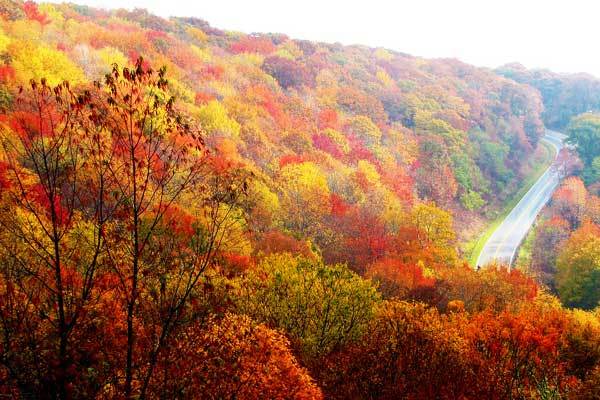
Length: 384 miles / 618km | Best Time to Hike: Spring and autumn
The Appalachian National Scenic Trail winds back and forth between North Carolina and Tennessee several times. Therefore, it would be challenging to just hike one of the states and not the other.
Some of the main draws for this section of trail is Great Smoky Mountains National Park and the balds near Roan Mountain. Balds are open and treeless mountains where you can experience incredible views.
Virginia Hikes
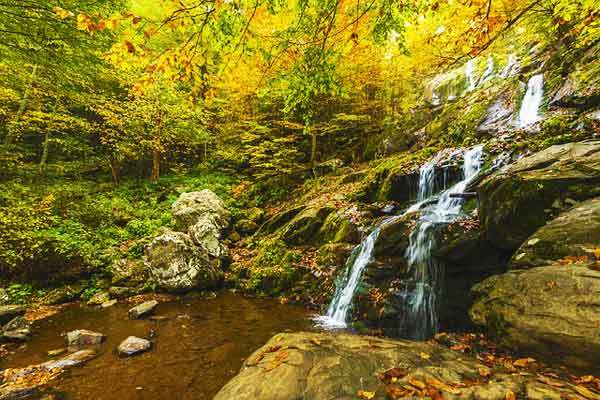
Length: 554 miles/ 891km | Best Time to Hike: Spring, early and late summer, and autumn
Virginia-section hikes are definitely a good option for beginner backpackers. The elevations aren’t as drastic as most other states along the Appalachian Trail.
There’s lots of options for cool places to check out along the way, such as seeing the wild ponies at Grayson Highlands, the spectacular rocks and scenery at Tinker Cliffs and the famous McAfee Knob, and spotting black bears in Shenandoah National Park. Not to mention, Damascus, Virginia hosts the annual hiker festival Trail Days.
West Virginia Hikes
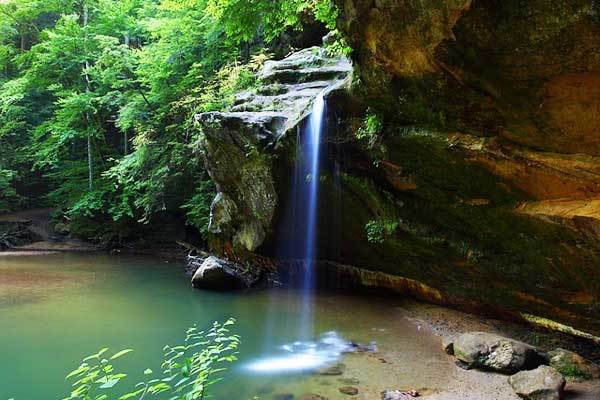
Length: 4 miles/ 6km | Best Time to Hike: Spring, summer, and autumn
The Appalachian Trail only traverses four miles through West Virginia, so it can easily be done as a day hike.
This is a perfect distance for someone who wants to check a state off the list and doesn’t have too much time.
It’s certainly worth a visit to the Appalachian Trail Conservancy headquarters in Harper’s Ferry. At headquarters, thru-hikers and section hikers can get their photos taken for the hiker photo albums. You can even flip through photo books of past hikers going back for decades.
Maryland Hikes
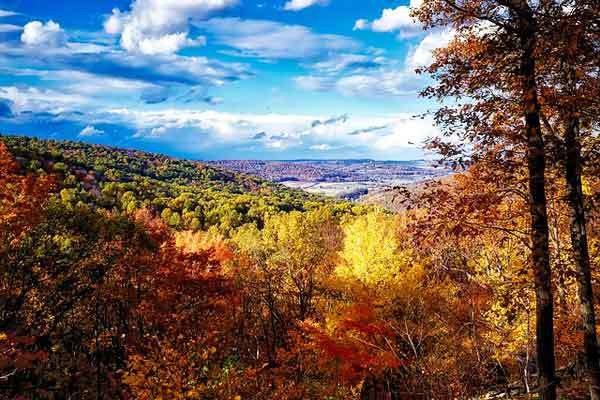
Length: 41 miles/ 66km | Best Time to Hike: Spring, summer, and autumn
Maryland hikes can be completed in less than a week. It’s also relatively flat, so it’s a good section for new hikers. There are also several historical sites and war monuments, so you can learn a bit about American history along the way.
There’s a nice spot along the Potomac River where you can take a dip in the water and relax on the beach.
Pennsylvania Hikes
Length: 229 miles/ 368km | Best Time to Hike: Spring, summer, and autumn
Fair warning here: Pennsylvanian trails are incredibly rocky and might not be the best destination for those who already deal with foot pain while hiking.
However, Pennsylvania is relatively flat compared to other sections of the Appalachian Trail. And snake lovers will be particularly happy with this state, as rattle snake and copperhead sightings are common.
Pennsylvania is also home to the halfway point of the trail and the infamous “half-gallon challenge”. The half-gallon challenge is when hikers eat an entire half-gallon of ice cream in celebration of completing half of the trail. This is done at Pine Grove General Store.
New Jersey Hikes
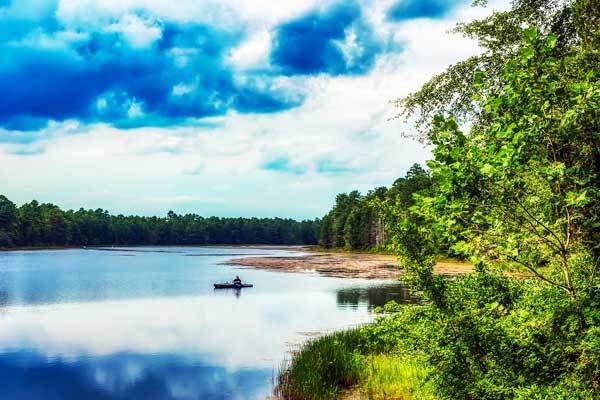
Length: 72 miles/ 116km | Best Time to Hike: Spring, summer, and autumn
One of the highlights of New Jersey is the large population of black bears in the state. Sightings are common. Be sure to properly store your food bag at night, and make plenty of noise while you’re walking. Again, New Jersey elevation changes are not drastic, so it’s not as difficult as other sections of the Appalachian Trail.
New York Hikes
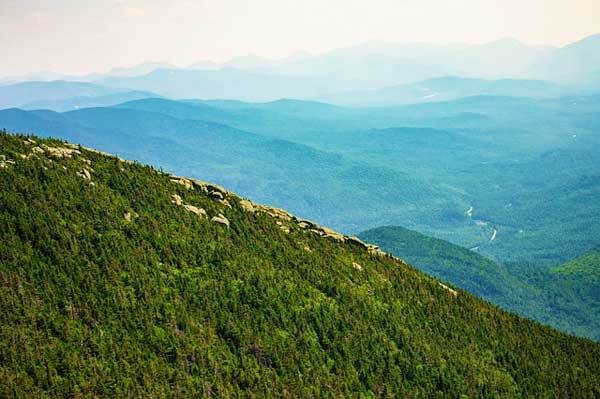
Length: 90 miles/ 145km | Best Time to Hike: Spring, summer, and autumn
Elevation changes start to pick up again in New York. While there aren’t huge mountains to hike up, there are lots of hills that constantly take you up and down over and over again. One of the highlights of New York is Bear Mountain where you can climb a tower and get views of New York City.
Another good thing about this stretch of trail is the large quantity of New York delis. Hikers can often stop at a shop for a sandwich for lunch, which is a nice break from trail snacks.
Connecticut Hikes
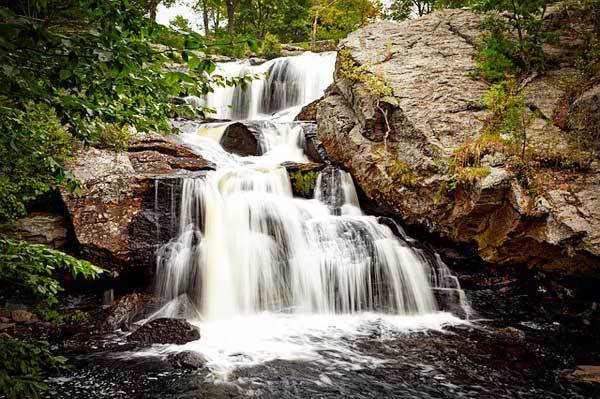
Length: 51 miles/ 82km | Best Time to Hike: Spring, summer, and autumn
Similar in length to Maryland, this is another section of the trail that would be good for hikers who have about a week.
One of the best stretches of this hike is a ridge line from Lion’s Head to Bear Mountain (different from the New York Bear Mountain). There’s several good views followed by a steep downhill over rocky terrain.
Massachusetts Hikes
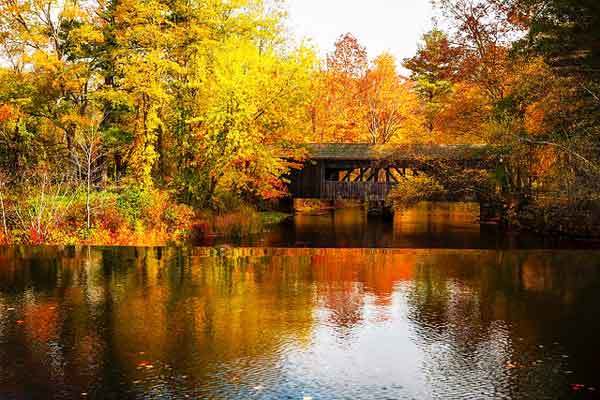
Length: 91 miles/ 146km | Best Time to Hike: Spring, summer, and autumn
This section of trail begins to get mountainous again, but not quite as mountainous as the more Northeast states. Upper Goose Pond Cabin is a must visit destination. Hikers can sleep in a cabin, take a swim in the pond, and enjoy blueberry pancakes in the morning. It’s on a donation basis.
Mt. Greylock is the highest point in Massachusetts and is another highlight of the state. It does take a long time to reach the top, but then you’re rewarded with a long downhill.
Vermont Hikes

Length: 150 miles/ 241km | Best Time to Hike: Late-spring, summer, autumn
Vermont is the state where the trail really begins to get mountainous again. It’s full of big mountains and green pines. Stratton Mountain and Mt. Killington are both highlights of Vermont.
Stratton Mountain is the place where Benton MacKaye first conceived the idea for creating the Appalachian Trail, and you can climb the old fire tower. Mt. Killington is a ski mountain where hikers can have a free ride on the gondola.
Another perk of this section is that it intersects the Long Trail for several days, so you get to meet some new hikers who are on a different trail.
New Hampshire Hikes
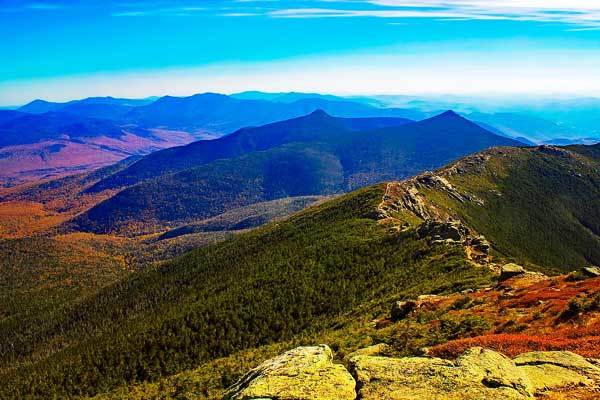
Length: 161 miles/ 259km | Best Time to Hike: Late-spring, summer, and early-autumn
New Hampshire is the place where the Appalachian Trail really starts to get difficult. It’s home to White Mountain National Forest, which has more miles above tree line than any other state on the trail. It’s arguably one of the most beautiful sections.
Make note that there are camping fees in the White Mountains. Thru-hikers can opt to do work-for-stay at the huts in exchange for a meal and a sleeping spot on the floor.
Maine Hikes

Length: 282 miles/ 454km | Best Time to Hike: Late-spring, summer, and early-autumn
The Maine section of trail truly feels like a wilderness experience. Because of its difficulty, it takes nearly a month to hike all of it. September is a wonderful time to go, if you want to see the leaves changing and don’t mind the cold.
The most northern section of the trail in Maine is the 100-Mile Wilderness, which is 100 miles with no towns or resupply points. It’s a tough and remote section to get through before finally finishing on Mt. Katahdin.
Packing List
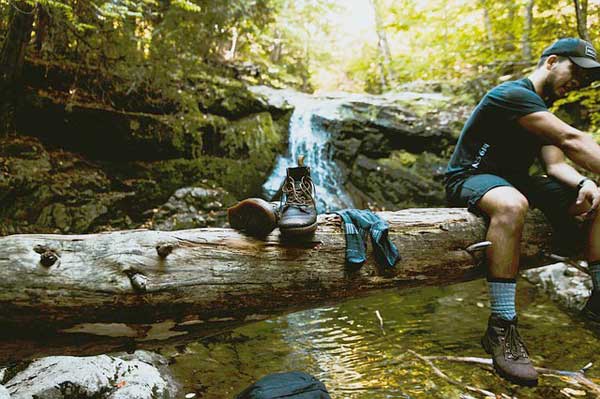
The final stage in preparation for your journey involves getting the right gear. While some of these items can be purchased or rented right before the trek, others are best bought before your trip to ensure quality, cost-effective equipment.
The hiking gear you choose to take with you on the Appalachian Trail will very much depend on what route you intend to take and what season you intend to trek in.
This detailed Appalachian trek packing list provides the intrepid trekker with tried, tested and refined recommendations. This packing list applies to most Appalachian hikes, unless you are hiking for a day.
The gear we recommend has been tried and tested by countless trekkers and will serve you well on any multi-day hiking experience.
Recommended Guidebook
The Appalachian Trail Conservancy and the Appalachian Long Distance Hikers Association work together every year to create the most up-to-date guide on the Appalachian Trail. It is called Appalachian Trail Thru-Hiker's Companion (2019).
In 2019 they included 50 updated maps, professionally crafted elevation profiles, and comprehensive tables for more easy access to the information while trekking.
It works both for thru-hikers and those who only want to trek a section or two.
Appalachian Trail FAQ
How long does it take to hike the Appalachian Trail?
It takes between 5 - 7 months to complete a thru-hike of the Appalachian Trail. Most hikers will choose to do certain sections or trails depending on how many days they want to spend hiking. Some hikers have completed the trail in 50 days!
Where does the Appalachian Trail start and end?
The Appalachian Trail spans across 14 different US states and the start and end point depend on which direction you're hiking it. Springer Mountain in Georgia and Mount Katahdin in Maine generally serve as the starting and end points of the 2,190 mile trail.
What is the hardest section of the Appalachian Trail?
There are several difficult sections along the Appalachian Trail, including the White Mountains in New Hampshire, Southern Maine, the Northern Pennsylvania sections, Great Smoky Mountains National Park, the New York sections and Baxter State Park (including Mt. Katahdin).
How much does it cost to hike the Appalachian Trail?
The cost of hiking the Appalachian Trail varies depending on how much gear you need to buy. Casual hikers will probably spend between $1000 - $2000 in order to get all the necessary gear. For hikers doing the complete trail, the Appalachian Trail Conservancy has recommended about $1000 per month per hiker.
You'll need to spend money on food, shelter and possibly some gear replacement so you should plan your budget around spending $100 per day and make sure you have available emergency funds as well.
How many miles do you walk per day on the Appalachian Trail?
The average hiker should expect to walk between 8 and 10 miles per day (13 - 16 km) at the beginning of their journey and then work their way up to 12 to 16 miles (19 - 26 km) per day.
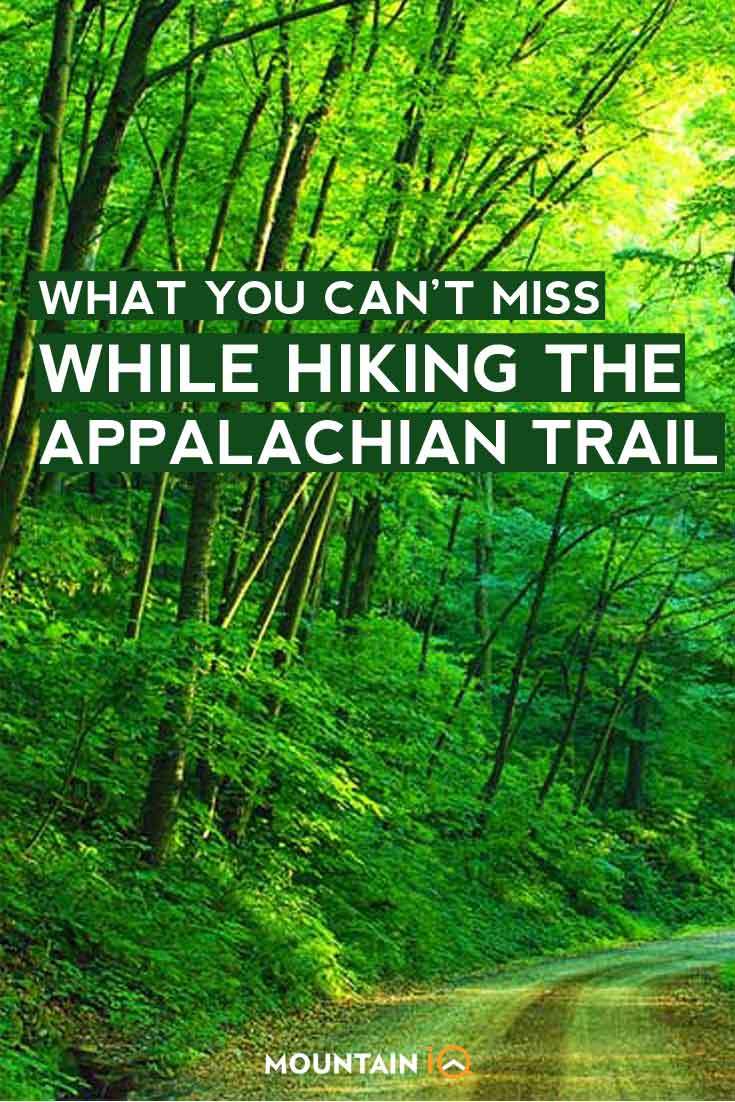
Browse more Appalachian hikes and guides
See our complete guide to the Appalachian trail, or visit our section guides.


